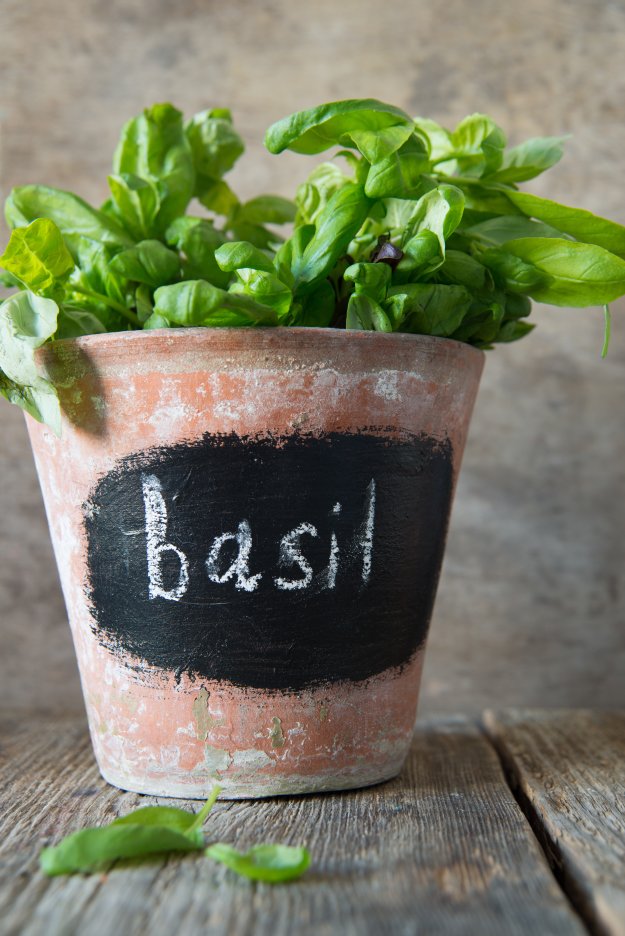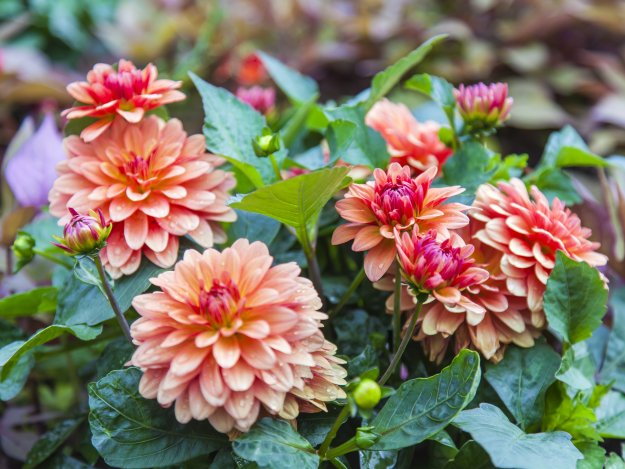Learn to grow an herb garden, a flower bed, and a vegetable garden with this homestead handbook. Tips for getting your herb garden started, and everything you need to know for a beautiful backyard any time of year.
 You are reading Chapter 11 of our gardening series in The Homestead Handbook:
You are reading Chapter 11 of our gardening series in The Homestead Handbook:
How to Grow All The Food You Need In Your Own Backyard
CHAPTER 11:
Growing an Herb Garden
While the focus of the square foot garden has overwhelmingly been edible crops, it can also provide other things like herbs, also good for cooking, and the general beauty of a flower garden. In this short appendix, we will introduce you to some popular herbs and flowers that you can consider growing in your square foot garden.
Before we get into the gritty details of planting, let’s do a little aside about the basil plant. It’s an incredibly popular herb and is used in all sorts of international style cooking. It will add a wonderful flavor to the tomatoes harvested to your garden! In particular the “Sweet Genovese” breed will give you enough basil that you can use in the kitchen all year round. When you’re planting basil, in fact, it’s a good idea to put it in a square foot that is close to your tomato or pepper plants. Basil drives off many insects that would otherwise bother these veggie plants—basil leaves will even repel fruit flies from your kitchen! Growing them as neighbors means all the plants will mature stronger and heartier. Another great species of basil is the ‘Spicy Globe’ dwarf basil. Unlike its cousins, this plant actually matures into a little ball-shaped plant.
For the best and most healthy basil, we recommend beginning your basil plant as a seed outdoors after you’re certain the last spring frost has passed. Another alternative is to start sprouting the seeds indoors 4 to 6 weeks before you begin planting. Either way, the important thing is to keep the basil warm—it does not react well to cold nights, and will die even in a light frost. You will want to sprout them in a window box that gets full sun, and make sure they get plenty of water during the whole season. Harvesting is simple: cut whole stems above the lower leaves, and the plant will then grow its new stem from that point that has been cut. You only want to use the leaves in any recipes, as that is where the flavor is. Stems can be added to your compost heap.

One fun activity with basil and other herbs is to dry your own! Save quite a bit of money by drying your own herbs and spices. Surely you’ve noticed the crazy prices of spice at your local grocery store—think how wonderful it would be to be able to avoid some of those costs. To dry basil and other herbs, hang the entire stem upside down in a dark, cool place, away from any direct sunlight. Keep them there for a few weeks. Once they’re dried, remove the leaves from the stems and store them in a jar or other container that is airtight. Your spices are ready to use from this point on! Homemade spices could be a wonderful gift for your culinary friends and family—they don’t have to worry about pesticides or other problems, and will probably receive a far fresher product than they’ve ever encountered at the store.
Growing an Herb Garden
Basil:
- Summer growing season
- Grows 1-2 feet
- 12 weeks from seed to harvest
- Can grow small plants in groups of 4, or large plants as a single
Chive:
- Late spring/summer growing season
- Grows 6-12 inches
- 16 weeks from seed to harvest
- Can plant as many as 16 in a square foot
Cilantro:
- Late spring/summer growing season
- Grows ½ feet
- 12 weeks from seed to harvest
- Plant 1 per square foot
Mint:
- Spring, summer, fall growing season
- Grows 1-3 feet
- Plant 1 per square foot
Oregano:
- Spring, summer, fall growing season
- Grows 1-2 feet
- 16 weeks from seed to harvest
- Plant 1 per square foot
Growing Flowers

Dahlias:
- Summer, fall growing season
- Grows 1-3 feet
- 10-12 weeks from seed to harvest
- Can plant 4 small or 1 medium per square foot
Dusty Miller
- Late spring, summer, fall growing season
- Grows 12-18 inches
- 15 weeks from seed to harvest
- Plant 4 per square foot
Marigold
- Summer, fall growing season
- Grows 6-12 inches
- 10 weeks from seed to harvest
- Plant 4 dwarf or 1 large per square foot
Pansy:
- Spring, summer (if cool), fall growing season
- Grows 6-9 inches
- 20 weeks from seed to harvest
- Plant 4 per square foot
Petunia:
- Late spring, summer, early fall growing season
- Grows 6-18 inches
- 14 weeks from seed to harvest
- Plant 4 per square foot
Salvia
- Late spring, summer, early fall
- Grows 1-2 feet
- 14 weeks from seed to harvest
- Plant 4 per square foot
That was Chapter 11: Growing an Herb Garden from our Homestead Handbook: How to Grow All The Food You Need In Your Own Backyard
<< Click Here to go back to the Table of Contents

Leave a Reply